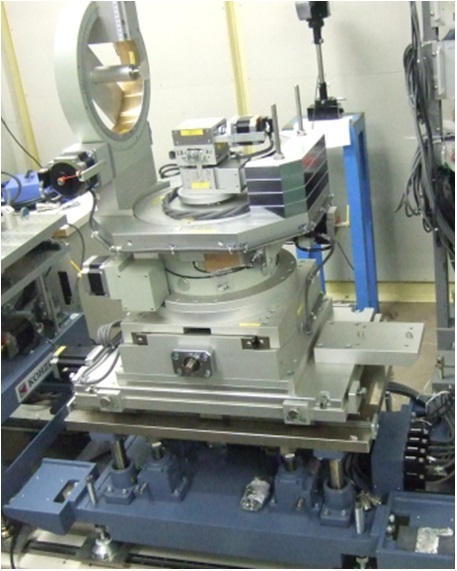

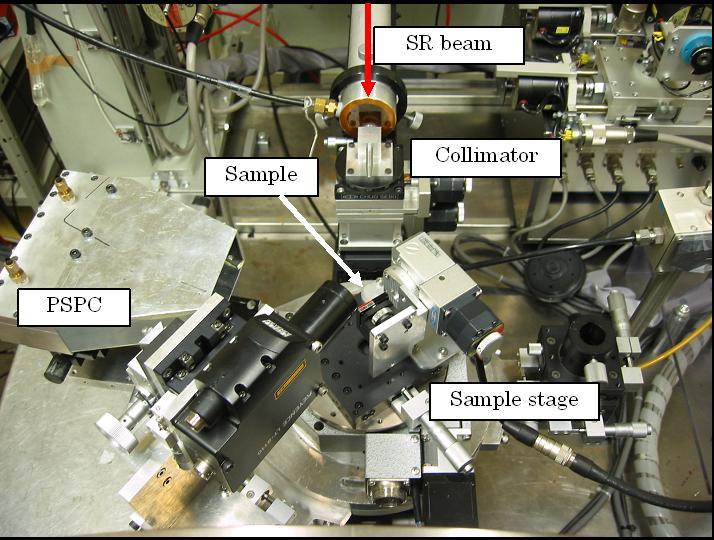
The tripleaxis/four-circle diffractometer can be used as a powder diffractometer to determine precisely the temperature dependence of lattice parameters and crystal structures. High-resolution synchrotron X-ray powder dffraction data, obtained through rotating stage, crystal analyser and scintilation detector, are used for total-pattern fitting, Rietveld analysis and MEM analysis. The heating furnace can be used in the atmosphere up to sample temperatures of 1500 deg. C.
The diffractometer consists of three different kinds of goniometers: monochro-collimator, four-circle and crystal analyzer. The diffractometer system has the following characteristics: (1) datum mechanism, (2) encoders for all axes, (3) large x circle (494 mm o.d, 370 mm i.d), (4) w axis with higher accuracy and (5) user-friendly STARS software via Tsuji interface. The four-circle goniometer has a large off-centered x circle (75 mm) to mount various apparatuses such as an electric furnace and a helium cryostat.
| Optics | Si(111) double crystal monochromator + cylindrical bent mirror |
| Energy region | 6~20 keV |
| Energy resolution | ΔE/E~10-4 |
| Beamline control | STARS (perl) |
BL-6C X-ray diffraction and scattering
X-ray fluorescence holography (XFH) is a powerful tool for investigating atomic environments around specific impurity atoms by obtaining three-dimensional (3D) atomic images. For the XFH, an angular dependence of the X-ray fluorescence intensity from the sample surface is measured. And we use our special goniometer. If you want to perform the XFH experiment, please mail to happo(at)hiroshima-cu.ac.jp.
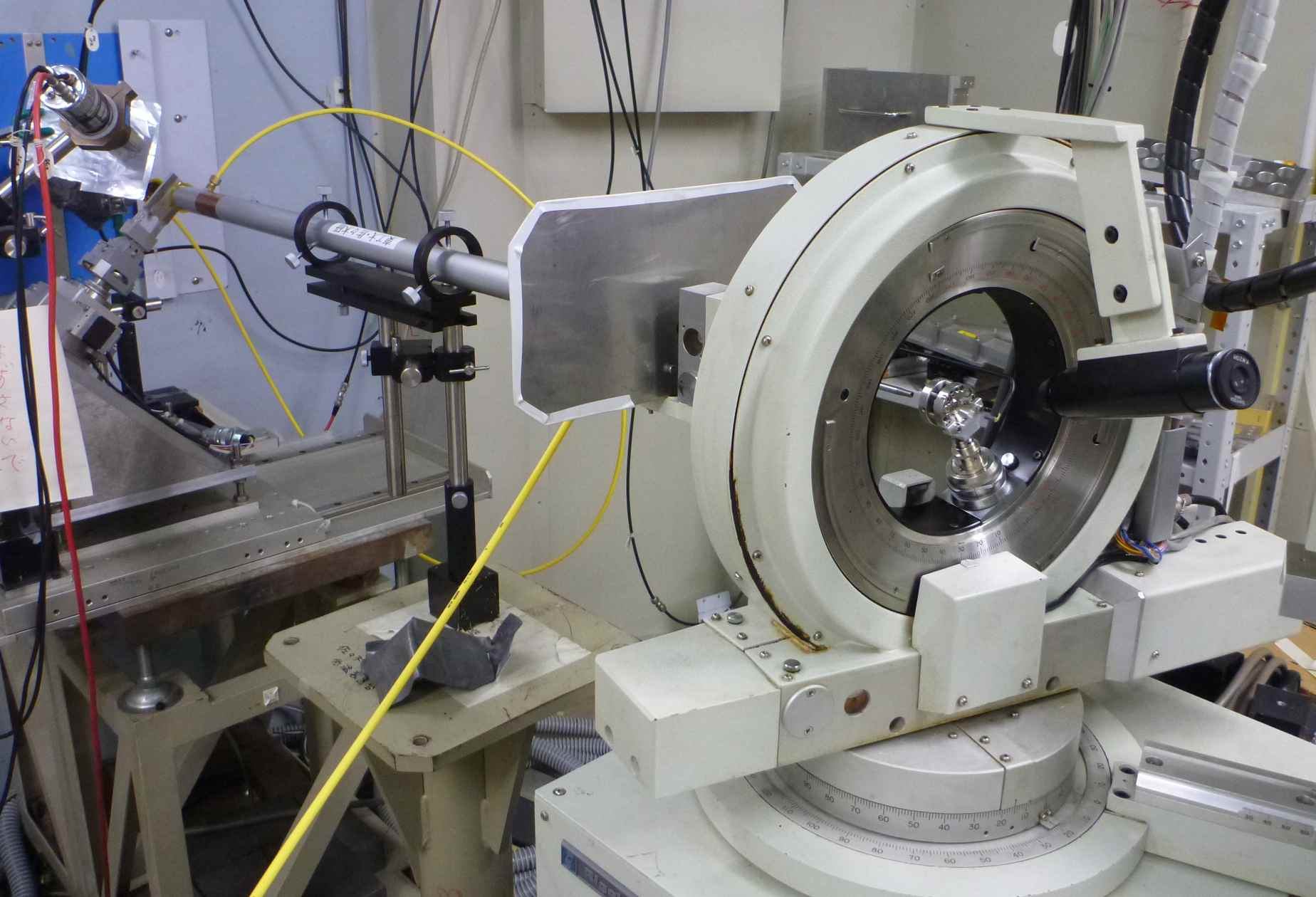
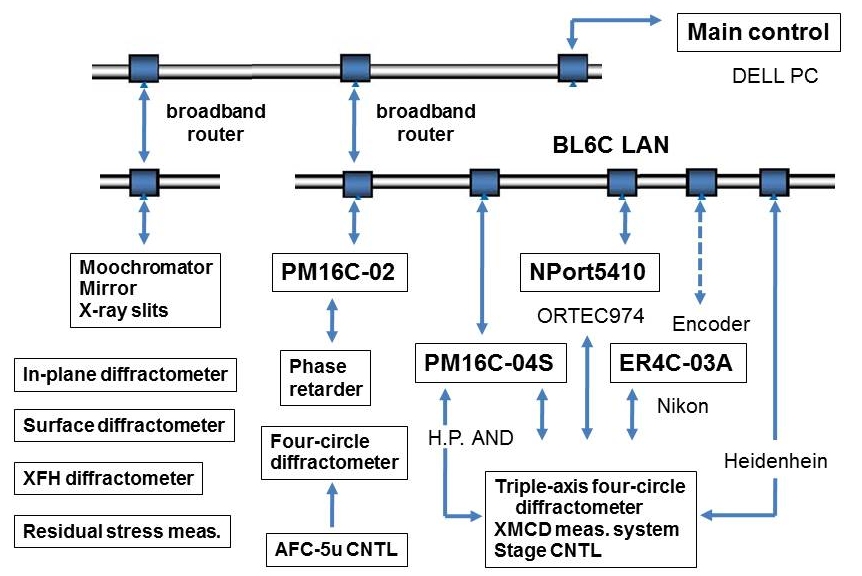
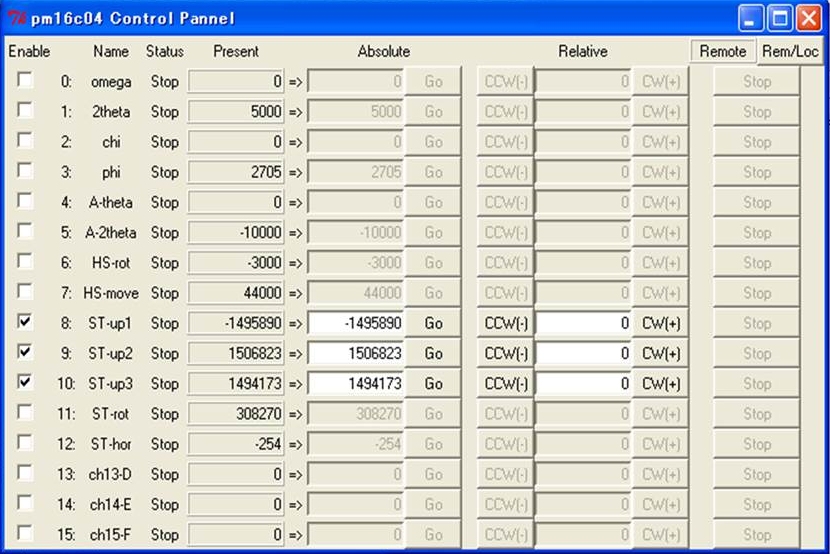
BL-6C beamline provides a double-focusing X rays in the energy range of
6 to 20 keV. It consists of double-crystal X-ray monochromator, cylindrical
bent X-ray mirror systems, X-ray slits and phase retarder. The various
scientific activities on material science have been carried out by means
of resonant X-ray magnetic and non-magnetic Bragg scattering, X-ray MCD,
accurate crystal-structure analyses, X-ray fluorescent holography, surface
diffraction, and residual stress measurements. In 2013, the cut-off energy
of the focusing mirror increased up to 20 keV, after the upstream movement
of monochromator and mirror to be free from the geometrical interference
of the other beamlines.
In collaboration with the Photon Factory, this beamline, moved from BL-3A,
has been operated by the Materials Physics Group (MPG) since FY2006.
Click here (MPG) for science,
activity and correspondence.
Fig. 10, Experimental setup of X-ray fluorescence holography (XFH) measurement
4, Others
The BL-6C is a cooperative beamline, operated by the Materials Physics Group (MPG). The user interested in the use of BL-6C should get into touch with contact persons of the subgroup as well as the MPG before submitting the application. Please note that the beam time is allocated to together in subgroups each.
Version: 2019-03-15 nh
(3) AFC-5u four-circle diffractometer
Fig. 8, Energy scan for phase retarder
Fig. 6, Multi-axis X-ray diffractometer
(1) Triple-axis four-circle diffractometer
Fig. 1, Plan view of BL-6C
Contact person: Hironori NAKAO (4868)
| Intersect accuracy | ~ 5 micron meter |
| Control Software | MSC (MS-DOS) |
| Maximum speed | 2000 ~ 1000 deg/min |
| Measurement speed | 1/8 ~ 128 omega-deg/min |
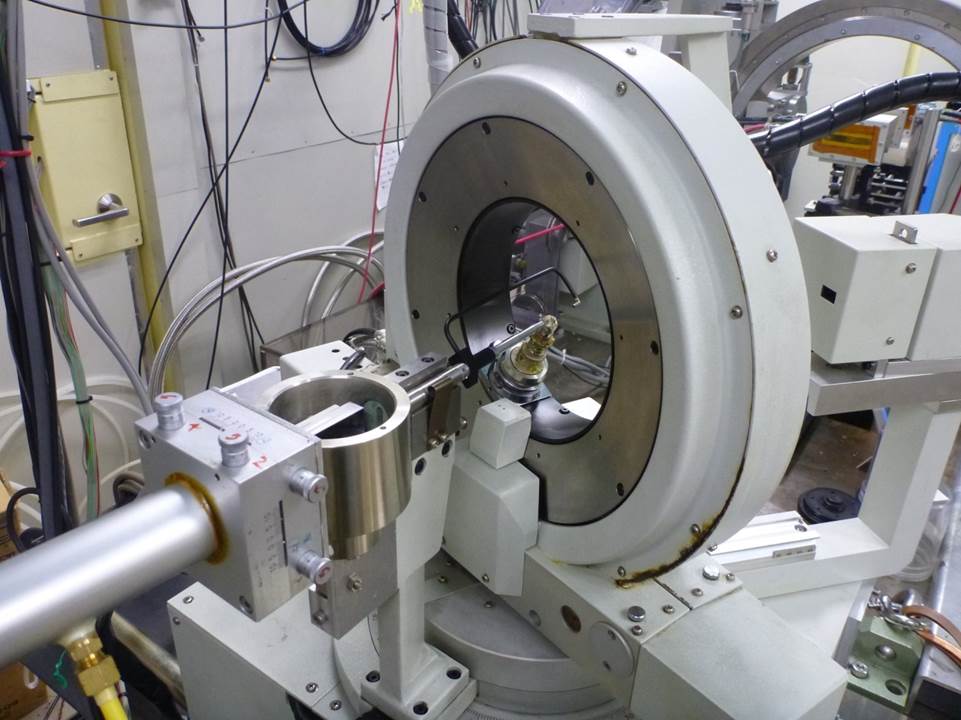
hironori.nakao & kek.jp
(2) Multi-axis X-ray diffractometer
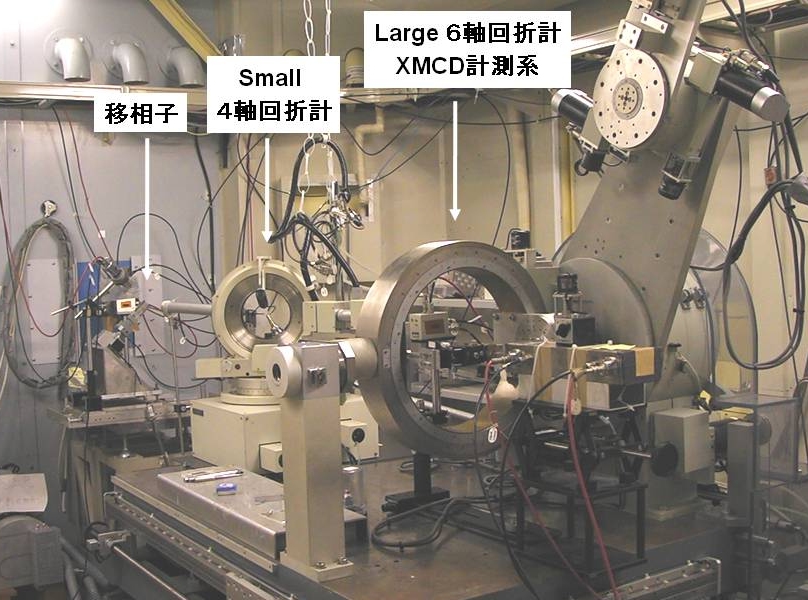

UG contact person: Naohisa HAPPO:
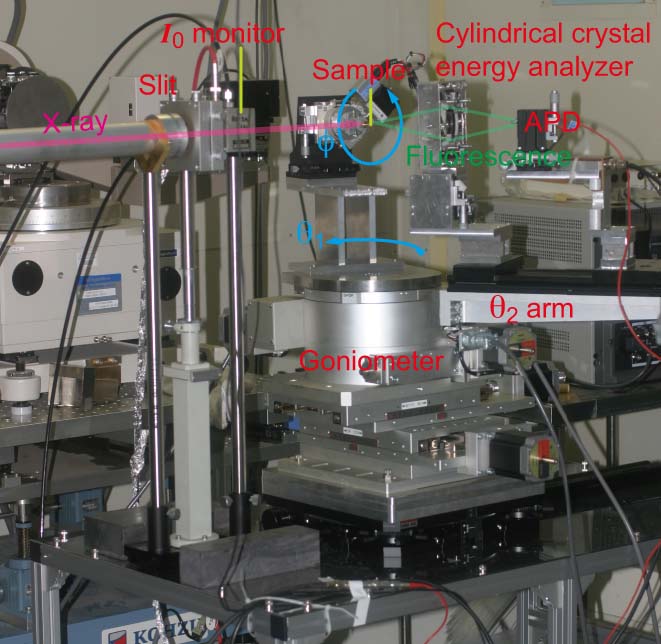
(4) X-ray fluorescence holography
Resonant X-ray magnetic scattering
Our research team aims at understanding of various phenomenon which occurred at material’s surfaces, e.g. surface relaxation, epitaxial growth and redox, through the use of synchrotron radiation in-plane diffraction method in which both incident and diffracted X-rays are nearly parallel to the surface. We welcome people who want to use the instrument we have as a collaboration work. If you are interested in our activities, please feel free to contact us (Katsutoshi Fukuda, e-mail; k-fukuda(at)saci.kyoto-u.ac.jp)..
(Hiroshima City Univ.)
happo & hiroshima-cu.ac.jp
Fig. 11, A multi-axis diffractometer at BL-6C
Click here (MPG) for science,
activity and correspondence.
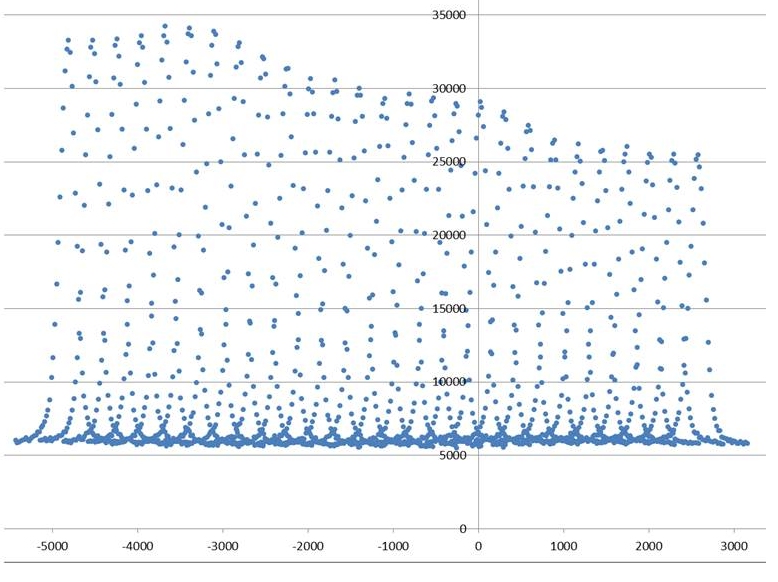
Click here (MPG) for science, activity and correspondence.
3. Equipments
2. Photons

Fig. 2, Double crystal monochromator and cylindrical bent mirror
Fig. 12, A goniometer for X-ray stress measurements
Click here (MPG) for science,
activity and correspondence.
|
(5) In situ X-ray diffraction experiments
(6) Diffractometer for X-ray stress measurements
Circularly polarized X rays allow us to make diffraction experiments in a state of polarization factor p = 1 at transition-metal K absorption edge. AFC-5u can be used irrespective of the scattering angle for accurate single-crystal structure analyses. However, in the case of using DAC with X-rays of 10 keV or higher, the integrated intensity measurements are limited to low-angle reflection data. If you are interested in our researches, please mail to makisan(at)lipro.msl.titech.ac.jp.
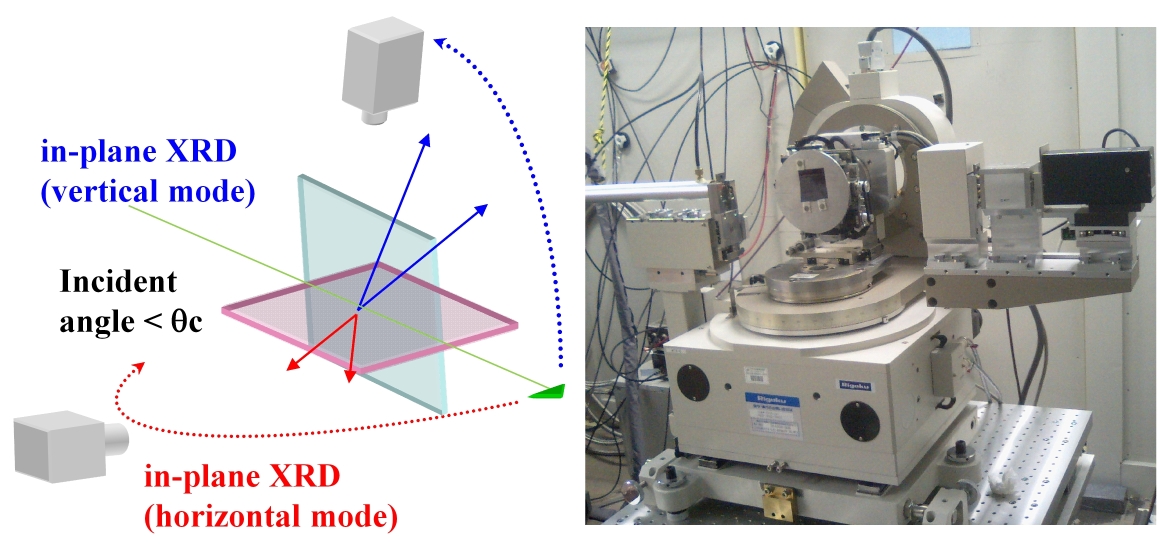
Click here (MPG) for science, activity and correspondence.
Fig. 4, Control panel for setting diffractometer and stage
1. Overview
Experiment (research collaboration with private industry)
In situ X-ray diffraction experiments are conducted by using a multi-axis diffractometer equipped with various in situ attachments, such as a high temperature furnace and an electro-chemical reaction cell. 2D diffraction images can be collected by a PILATUS detector or an imaging plate.
This apparatus is limited use for the research collaboration with Nippon Steel & Sumitomo Metal Co. and KEK.
Contact person: Reiko Murao (murao.5gg.reiko(at)jp.nssmc.com) and Masao
Kimura (masao.kimura(at)kek.jp) .
Residual stress can be evaluated through X-ray diffraction, which is a non-destructive technique to measure the crystallographic properties of materials. A goniometer with a position sensitive proportional counter (PSPC) is used for micro-area measurement of the residual stress (sine-squres-psi method; 0.1 mm). The cosine-alpha method with imaging plate can be applied for the measurements of plane stress and triaxial stress.
(7) High-temperature powder diffraction
Fig. 13, Diffractometer equipped with a high-temperature furnace
Click here (MPG) for science,
activity and correspondence.
Fig. 7, AFC-5u and multi-layer mirror
A Rigaku AFC5 goniometer is operating in excellent condition with XDC-5 interface and PC (DOS and MSC software) at BL-6C. Circularly polarized X rays can be used with the AFC5 diffractometer in the horizontal geometry of the scattering plane in order to prevent the intensity decreasing with linear polarization. A small single crystal is fully bathed in synchrotron X rays to examine the absolute scale of the crystal structure factors and to avoid severe absorption and high background.
Accurate crystal-structure analysis and high-pressure experiments
Fig. 9, AFC-5u and DAC setting
STARS (Simple Transmission and Retrieval System; http://stars.kek.jp) was installed in the beamline and diffractometer control system at BL-6C in November, 2009. Since then it has been used for controlling the optical components of beamline, major four-circle diffractometer, experimental stage, phase retarder and so on. Through the STARS system, X-ray intensity measurements can be systematically carried out for various researches such as X-ray resonant scattering, resonant magnetic scattering, XMCD, crystal-structure analysis, residual stress analysis and diffuse scattering experiments.
Fig. 3, BL-6C STARS system
Click here (MPG) for science,
activity and correspondence.
Fig. 5, Two types of four-circle diffractometers and phase retarder.